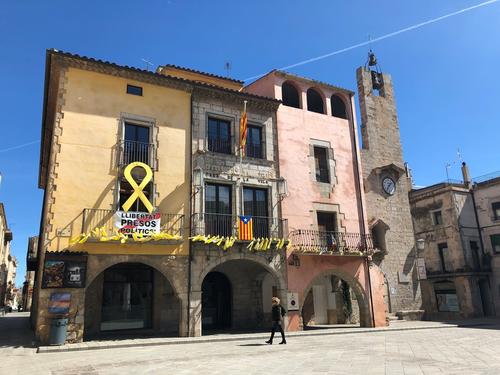
Sergio Infante, Department of History
Chentian Jin, Jinchen Zou, Monica Wang, Yale College
Introduction and Findings
On October 1, 2017, the Catalan regional government unilaterally instituted a referendum for Catalan independence. The referendum, unconstitutional by the Spanish law, became highly controversial and divisive. While majority voted for independence in this referendum, the results were skewed by abstentions. The Spanish government, grasping for control of the situation, subsequently invoked Article 155 to dissolve the Parliament of Catalonia.
Since then, there has been continued mobilization on both sides, aided by significant, and at times, inaccurate international media. December 2017 saw parliamentary elections for Catalonia, with a centrist party Ciudadanos, gaining a surprising number of seats, yet not enough to form any majority for the pro-unity coalition.
Tensions heightened when the Spanish Supreme Court charged a handful of Catalan politicians with rebellion, and put them in jail as a preventive measure. That night, Catalan residents, those who decried what they saw as the taking of political prisoners, took to the streets to protest the Spanish government’s heavy-handed approach to the pro-independence movement. This included voters who did not support independence, but believed that Catalans had a right to decide their future. On the other side, some voiced their support for what they perceived to be Madrid’s vigorous enforcement of the law. At a time of uncertainty, the two sides blamed each other and often talked past each other. The issue remains unresolved.
About the Trip
The team at Yale, composed of 5 students from a variety of disciplines and backgrounds, approached the issue this spring. Over the third week of March, the Yale students traveled to Barcelona, Girona, and other regions of Catalonia to speak with local politicians, academics and students to get the perspective on the ground. They included Xavier Trias, former mayor of Barcelona and city leader of the pro-independence party PDeCAT; Irene Alvarez, board member of the anti-independence organization Societat Civil Catalana; and Susana García, Member of Parliament of the anti-independence party Ciudadanos. We also met with university students, including student leaders of the European Horizons chapter at the Universidad Autónoma de Barcelona.
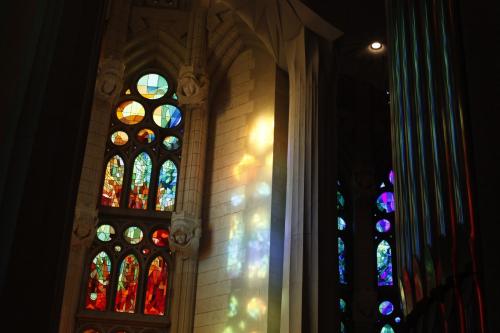
The nave of the Sagrada Familia in Barcelona.
Barcelona is the economic powerhouse of Spain, producing 20% of Spain’s GDP. In conversation with the former mayor of Barcelona, Xavier Trias, we learned that this Catalan city styles itself as a forward -thinking metropolis. There is a certain element of pragmatism infused in the weaving thoroughfares of the city. This curious blend of graceful form and streamlined function is on exhibit at the Sagrada Familia. As a basilica that has been undergoing construction for the past 100 years and onwards, the Sagrada Familia has stood testament to the ever-evolving identity of the city and its inhabitants.
Gaudí, the primary architect behind the project, envisioned the design of the Sagrada Familia to be a forest. Through complex geometry and symbolism, Gaudí carefully guides the filtered, multicolored light to caress surfaces, nooks, and crannies inside the basilica. There is much present in these illuminated spaces: the sacred, tourism, incongruity. And if one really wanted to, one could imagine the politics of nationalism slipping in as well.
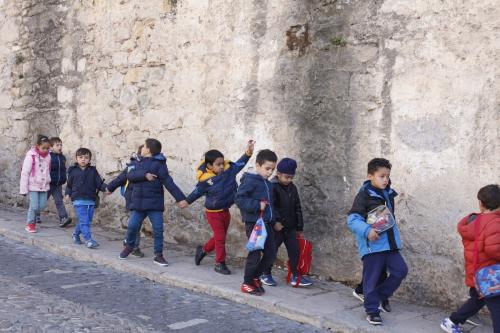
Catalan children on a school trip in Girona, one of the largest cities in the Catalan hinterland.
In the debates on independence, education—especially language instruction—has been a primary concern for both sides. After the fall of the Franco regime and the creation of a new Spanish constitution in 1978, various powers (or, in the local parlance, “competencies”) of the central government devolved onto the autonomous communities. Chief amongst these was education. Although Catalonian schools instruct students in Catalan and Spanish, detractors claim that the split is not equitable.
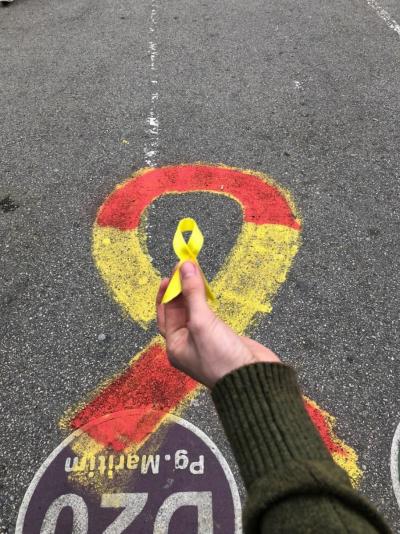
The pavement of the Rambla, one of the largest boulevards in Barcelona. The picture shows a yellow bow, distributed by the pro-independence protestors on the Plaça de Catalunya, and a yellow-and-red graffiti bow, meant to evoke unity with Spain.
Walking through the streets in Catalonia, one regularly passes people with yellow ribbons pinned to their coats. The wearing of these ribbons, the painting of them on walls and sidewalks, and the illuminating of fountains with yellow lights all evoke solidarity with leaders of the independence movement who have been imprisoned.
In December 2017, Madrid ordered the Barcelona City Council to stop lighting fountains up in yellow. In the streets, one sees walls that have been scrubbed of the yellow ribbons painted on them. The yellow ribbon has turned into a charged symbol, one recognizable outside of Spain. In March 2018, former Barcelona FC coach Pep Guardiola was charged by the Football Association in England for wearing the ribbon - and therefore a political message - at matches played by Manchester City FC, the club he now coaches.
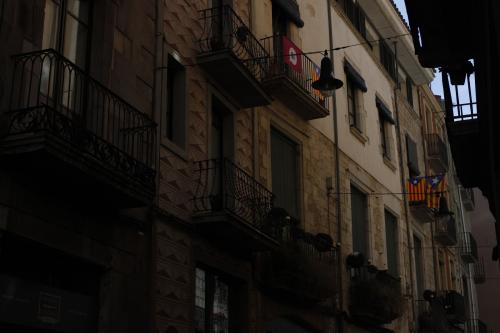
Pro-independence flags drape across apartments in an alleyway in Girona. Sight of the starred flag, whose officiality is still disputed, is not uncommon in the Catalonian countryside, which is known for its medieval walls, winding streets, and hidden stairways.
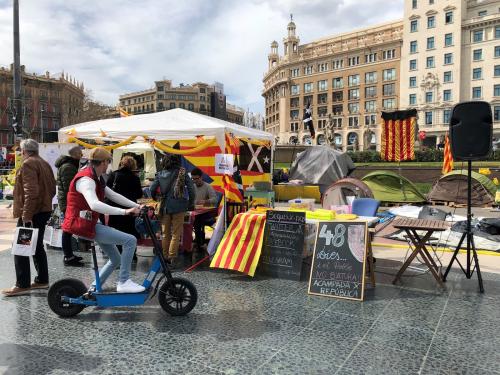
Citizens taking actions into their own hands. On the Plaza de Catalunya, one the major squares of the city, this group of people have been camping out for the last 48 days, handing out yellow ribbons to passers-by and the crowds of tourists streaming through Barcelona. This is the same square that erupted in protest after the Spanish Supreme Court passed judgment on the so-called acts of “rebellion” conducted by the Catalan politicians.
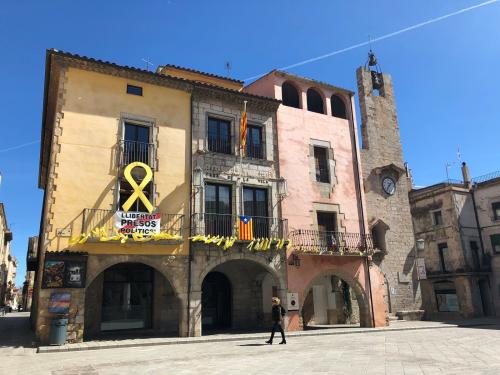
Taken in the main square of Torroella de Montgrí, a coastal municipality where the Ter river flows into the Mediterranean, this picture captures strong nationalist sentiments in the small towns and countryside.
The rural/urban divide has been one of the issues repeatedly brought up over the course of the movement. Anti-secessionists criticize residents in the countryside for their lack of attachment to the rest of Spain. They also seethe at how votes in the countryside translate into more seats in the parliament, arguing that the parliamentary majority that pro-independence party has fails to adequately account for the voices of those living in the major cities.
